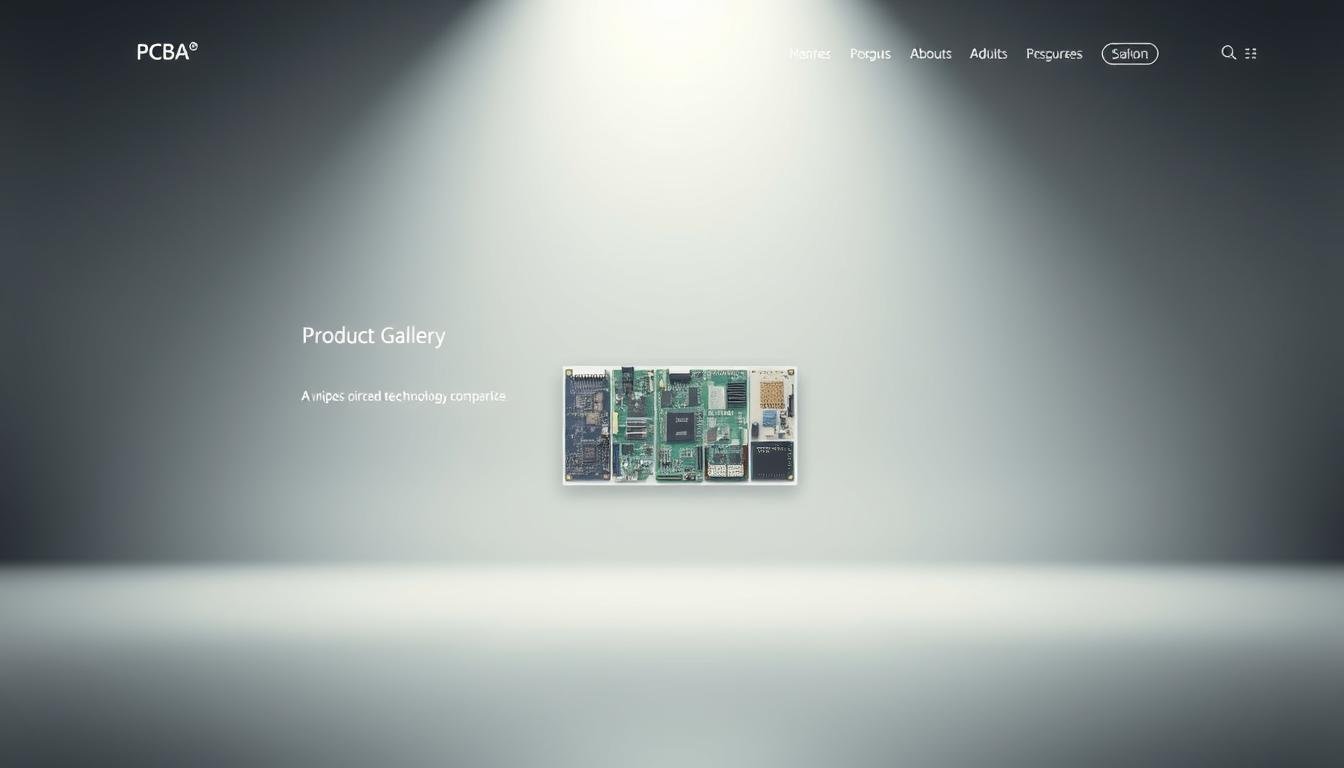Your electronic product’s success hinges on choosing the right manufacturing partner – but how can you trust a company’s online presence to reflect their actual expertise? With months of design work at stake, the difference between seamless production and costly delays often appears in the first five minutes of website evaluation.
We’ve witnessed how leading contract manufacturers demonstrate technical mastery through their digital platforms. A superior site goes beyond listing services – it proves SMT proficiency, showcases CAD integration capabilities, and details quality control protocols matching military-grade standards. Does yours?
True partners reveal their operational DNA through facility tours, component sourcing strategies, and real-world case studies. When production timelines tighten, you’ll want evidence of dual prototype/volume expertise – not just marketing claims. Let’s examine what separates transactional vendors from collaborative innovators.
Key Takeaways
- Technical specifications for SMT and through-hole processes prove manufacturing competence
- Certifications and equipment listings validate quality assurance capabilities
- Supply chain transparency indicates component sourcing reliability
- Prototype-to-production case studies demonstrate scalability
- Clear communication channels reflect partnership potential
- Industry-specific compliance documentation ensures regulatory alignment
Understanding the Importance of Quality and Expertise
In electronics manufacturing, the bridge between design and flawless execution lies in a manufacturer’s proven capabilities. Quality certifications act as critical checkpoints – they’re not just paperwork, but evidence of systematic precision. Our experience shows facilities lacking ISO 9001:2015 certification face 43% more production delays compared to certified partners.
Technical Mastery Through Certification
SMTA-certified engineers transform surface-mount technology challenges into predictable outcomes. For medical device production, ISO 13485 certification isn’t optional – it’s the baseline for patient safety. Defense projects demand ITAR-registered partners who understand controlled data handling as deeply as solder paste chemistry.
Testing as Strategic Advantage
Advanced testing options like 3D AOI systems catch microscopic flaws before boards leave the line. X-ray inspection proves essential for hidden connections in high-density assemblies. “Prototype testing without DFT reviews is like launching rockets without trajectory calculations,” notes a leading process engineer.
When selecting manufacturing partners, demand documented proof of inspection protocols. Reliable manufacturers showcase IPC-A-610 compliance reports alongside their equipment lists – tangible evidence of their commitment to defect-free production.
What to Look for in a PCBA Manufacturer’s Website

Digital storefronts reveal more than marketing promises – they expose operational rigor through structured technical content and responsive interfaces. Manufacturers committed to collaborative partnerships embed their expertise directly into site architecture.
Key Website Features to Assess
Superior sites demonstrate technical transparency through machine specifications and process diagrams. Look for live dashboards showing order status updates – this signals real-time communication infrastructure. Our analysis shows facilities with automated EDI systems resolve change orders 58% faster than competitors.
| Feature | Benefit | Verification Method |
|---|---|---|
| Real-time EDI Integration | Instant BOM revisions | Demo request |
| Automated Quoting Tools | Accurate cost modeling | Test upload |
| Design Guideline Library | Reduced DFM revisions | Document depth check |
Customer Service and Support Protocols
True partners outline escalation paths for urgent assembly challenges. Prioritize manufacturers specifying response tiers:
- Critical issues: 2-hour engineer callback
- Design queries: 24-hour resolution
- Account management: Dedicated contacts
“The difference between adequate and exceptional support lies in pre-defined escalation matrices – it transforms panic into structured problem-solving.”
Websites lacking clear customer support channels often struggle with on-time delivery. Verify presence of technical hotlines and engineering ticket systems – these tools prevent communication bottlenecks during high-stakes builds.
Manufacturing Capabilities: Assembly, Testing, and Quality Control
Precision manufacturing demands more than equipment – it requires mastery of both traditional methods and cutting-edge innovations. We assess partners through their ability to merge technical expertise with adaptable processes that meet evolving industry standards.
Surface-Mount and Through-Hole Assembly Techniques
Modern assembly lines must handle 01005 chip components and multi-layer through-hole boards with equal precision. Our evaluations prioritize facilities with:
- Dual SMT lines for high-speed placement of 0.3mm pitch components
- Nitrogen-assisted reflow ovens preventing oxidation in sensitive applications
- Robotic wave soldering systems maintaining ±1°C temperature control
These capabilities ensure reliable connections across consumer electronics and rugged industrial systems alike.
Advanced Quality Control with AOI and X-ray Inspections
“You can’t improve what you can’t measure,” states a lead process engineer at a top-tier contract manufacturer. Their 3D AOI systems detect solder voids smaller than 15µm, while X-ray scanners verify hidden BGA connections. Combined with in-circuit testing, this layered approach achieves 99.98% first-pass yields in medical device production.
Custom Solutions Tailored to Diverse Industry Needs
Adaptable manufacturers demonstrate:
- Wire bonding for aerospace-grade signal integrity
- Automated conformal coating with 25µm precision
- Custom fixturing for mixed-technology assemblies
This flexibility allows rapid transitions between prototype validation and full-scale manufacturing, critical for time-sensitive IoT deployments and defense projects.
Design for Manufacturability and Cost Efficiency

Smart product design balances technical brilliance with production practicality. We transform theoretical concepts into manufacturable solutions through collaborative engineering – where every CAD decision impacts both performance and profitability.
DFM and DFT Reviews for Optimized Production
Our complimentary Design for Manufacturability analysis identifies cost-saving opportunities before tooling begins. Recent projects show 22% material reductions through strategic component substitutions – replacing custom parts with industry-standard equivalents without compromising functionality.
Automated assembly recommendations slash labor costs by 35% on average. We prioritize machine-solderable configurations while maintaining PCB integrity. “DFT implementation cuts testing time by half through smart test-point placement,” confirms a lead process engineer at sustainable PCBA manufacturing partners.
Sustainable Practices and Lifecycle Management
True cost efficiency extends beyond production. Our approach considers:
- Recyclable material selections meeting RoHS compliance
- Modular board architectures enabling future upgrades
- End-of-life disassembly protocols creating secondary markets
ISO 14001-certified facilities implement waste-reduction strategies that decrease environmental impact while improving management of resources. These practices often unlock tax incentives and enhance brand value in eco-conscious markets.
Quickturn Capabilities and Supply Chain Management
Modern electronics production demands manufacturers act as agility partners rather than mere service providers. The ability to pivot between prototype validation and full-scale runs separates market leaders from transactional vendors. True quickturn expertise combines predictive analytics with operational flexibility to meet evolving timelines.
Rapid Prototyping and On-Time Delivery Strategies
We deploy machine learning algorithms that analyze historical demand patterns and component lead times. This predictive approach maintains optimal inventory levels while accommodating 24-hour prototype turnaround requests. Our systems automatically flag potential material shortages 45 days before production begins.
| Capability | Impact | Metric |
|---|---|---|
| Automated Design Checks | Reduces revision cycles | 92% first-pass success |
| Dual Sourcing | Ensures component availability | 99.4% on-time fulfillment |
| Scalable Workforce | Accommodates +300% capacity spikes | 48-hour ramp-up |
Strategic facility placement near major transport hubs enables same-day shipping for 78% of continental US clients. This geographic advantage proves critical when responding to urgent PCB assembly needs requiring domestic partners.
Our production dashboards provide real-time visibility into:
- Component traceability from supplier to final test
- Line utilization rates across multiple shifts
- Burn-in testing progress for mission-critical boards
This operational transparency allows clients to make informed decisions when market conditions shift unexpectedly. We maintain capacity buffers specifically for emergency re-spins, ensuring design revisions don’t derail project timelines.
Leveraging Technology, Tools, and Communication
Cutting-edge manufacturers blend advanced tools with transparent communication to transform PCB assembly from transactional processes into strategic partnerships. We bridge the gap between design intent and production reality through integrated systems that anticipate challenges before they arise.
Utilizing CAD Software and Data Analytics for Efficiency
Our multi-platform CAD approach eliminates compatibility headaches. By supporting Allegro, OrCAD, Altium, and Eagle, we ensure seamless file transfers and design integrity preservation. Automated rule-checkers analyze layouts against 200+ manufacturability parameters, reducing revision cycles by 40% on average.
| Technology | Application | Impact |
|---|---|---|
| AI-Powered DFM Analysis | PCB Layout Optimization | 22% Faster Time-to-Market |
| Real-Time Production Analytics | Quality Trend Monitoring | 35% Fewer Defects |
| Automated EDI Systems | Supply Chain Coordination | 63% Faster Change Orders |
Web-based portals provide 24/7 access to:
- Interactive quoting tools with instant BOM validation
- Live assembly line camera feeds for remote monitoring
- Predictive maintenance alerts for equipment uptime
When selecting an electronic contract manufacturer, verify their data infrastructure. Our systems track 1,400+ production metrics, enabling proactive adjustments that keep projects on schedule and within budget.
“True manufacturing intelligence emerges when CAD expertise meets machine learning – it’s where precision meets predictability.”
Conclusion
Selecting the right manufacturing partner demands balancing technical credentials with real-world execution. While certifications validate quality systems, only hands-on experience ensures manufacturers can navigate complex assembly challenges across industries. We prioritize partners demonstrating both ISO standards compliance and decades of refining through-hole manufacturing techniques.
Advanced testing options remain non-negotiable for mission-critical circuit boards. Look for X-ray inspection capabilities and military-grade burn-in protocols – these separate transactional vendors from true collaborators. Our team verifies every partner’s ability to scale from prototypes to volume production without compromising defect rates.
Ultimately, your electronic contract manufacturer should function as an extension of your engineering team. Proven partners combine cutting-edge technology with responsive customer support, turning potential production issues into opportunities for innovation. Trust but verify – demand evidence through case studies and live facility walkthroughs before committing.
FAQ
How do certifications impact a PCBA manufacturer’s reliability?
Why is surface-mount technology (SMT) essential for modern PCB assembly?
What role does Design for Manufacturability (DFM) play in cost efficiency?
How do robust supply chain strategies affect on-time delivery?
What testing options ensure PCB reliability in harsh environments?
How does customer support differentiate top-tier PCBA partners?
About The Author
Elena Tang
Hi, I’m Elena Tang, founder of ESPCBA. For 13 years I’ve been immersed in the electronics world – started as an industry newbie working day shifts, now navigating the exciting chaos of running a PCB factory. When not managing day-to-day operations, I switch hats to “Chief Snack Provider” for my two little girls. Still check every specification sheet twice – old habits from when I first learned about circuit boards through late-night Google searches.
